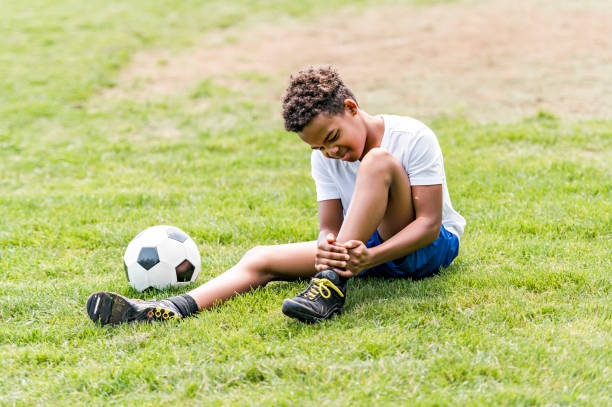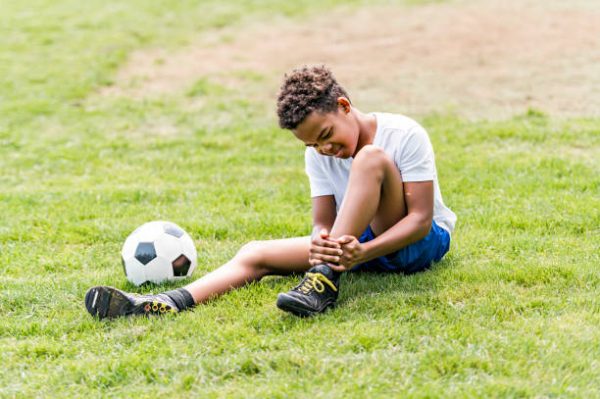Children are prone to everyday activities like running, handling sharp objects, and rushing through meals, which significantly increase their chances of getting hurt. Parents must be vigilant and take proactive measures to protect their children from these dangers.
Read more about Health
Therefore, let us delve into the types of childhood injuries and provide practical tips and strategies to help parents prevent them. By understanding these risks and implementing preventive measures, parents can create safer environments for their children to play and grow.
Understanding Childhood Injuries
Injuries in children could be mild or severe. Mild injuries could be tended to at home but severe injuries should be taken to the hospital.
Common injuries in children include:
Certainly, here are some common childhood injuries:
- Falls: Falls from playground equipment, furniture, or stairs are among the most frequent causes of injuries in children.
- Cuts and Lacerations: Accidental cuts from sharp objects.
- Burns and scalds: Exposure to hot surfaces, and boiling liquids.
- Poisoning: Ingestion of household chemicals, medications, or toxic substances, leading to poisoning incidents.
- Choking: Young children are prone to choking on small objects, food items, or toys, which can obstruct their airways and cause respiratory distress.
- Sports Injuries: Participation in sports and recreational activities can lead to injuries such as sprains, strains, fractures, and concussions.
- Bicycle Accidents: Riding bicycles without proper safety gear or in areas with heavy traffic increases the likelihood of accidents and injuries.
- Drowning: Accidental drowning in pools, lakes, or bathtubs is a leading cause of death among young children, emphasizing the importance of water safety.
- Dog Bites: Interactions with unfamiliar or agitated dogs can result in bites and injuries, highlighting the need for proper supervision and education on animal behaviour.
- Strangulation: Entrapment in cords, strings, or clothing accessories poses a risk of strangulation, especially in infants and toddlers.
- Smoke, fire and flames.
Sign up for the Connect Nigeria daily newsletter
Home Safety Measures
Implementing home safety measures is crucial for preventing childhood injuries. Here are some effective strategies:
- Install safety gates at the top and bottom of stairs to prevent falls, and use window guards to prevent falls from windows.
- Secure furniture, TVs, and heavy objects to the wall to prevent them from falling.
- Use childproof locks and latches on cabinets, drawers, and appliances to prevent access to hazardous items such as cleaning supplies, medications, and sharp objects.
- Cover electrical outlets with safety plugs or outlet covers, and secure cords and wires to prevent tripping hazards.
- Keep wires and cords out of reach of young children to avoid strangulation.
- Store sharp objects, such as knives and scissors, in locked drawers or high cabinets.
- Keep hot liquids and foods away from the edges of counters and tables, and use stove guards to prevent burns.
- Bathroom Safety: Install non-slip mats in the bathtub and shower to prevent falls.
- Use a toilet lock to prevent drowning hazards for small children.
- Store medications, toiletries, and cleaning products out of reach or in locked cabinets.
- Secure Hazardous Areas: Keep doors to areas such as the garage, laundry room, and basement locked or secured with childproof door knobs to prevent access to dangerous tools, chemicals, and equipment.
- Keep small toys, balloons, and toys with small parts out of reach of young children to prevent choking hazards.
- Encourage older children to clean up toys after playtime to avoid tripping hazards.
- Install smoke detectors on every floor of the home and test them regularly.
- Store fire extinguishers in accessible locations.
- Always supervise young children, especially around water, in the kitchen, and near potentially hazardous areas. Teach children about household safety rules and the importance of following them.
By implementing these home safety measures, parents can create a safer environment for their children and reduce the risk of childhood injuries. Regularly reassessing and updating safety measures as children grow and develop is also essential for maintaining a safe home environment.
Responding to Emergencies
In the event of an accident, even after taking proactive measures to prevent injuries in children, parents need to be prepared to respond effectively to emergencies. This includes possessing vital skills such as CPR (Cardiopulmonary Resuscitation), first aid, and knowing how to assist in cases of choking. These skills can make a significant difference in the outcome of an emergency situation and can potentially save a child’s life.
By being prepared and equipped with the necessary skills and resources, parents can confidently respond to emergencies and provide timely assistance to their children in times of distress.
Register to attend the CN Business Mixer
Conclusion
In conclusion, safeguarding children from injuries requires a multifaceted approach that encompasses both proactive prevention measures and preparedness to respond to emergencies. By implementing home safety measures, supervising children diligently, and educating both children and caregivers about safety practices, parents can significantly reduce the risk of childhood accidents. However, despite our best efforts, emergencies may still arise, underscoring the importance of possessing essential skills such as CPR and first aid.
Sources: Rraisingchildren.net.au
Got a suggestion? Contact us: [email protected]


